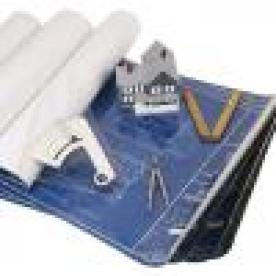Speeding up a blueprint generation process that can be done by hand does not make computer software eligible for patenting. So reasoned the New Hampshire district court in another of a bevy of post-Alice district court decisions that have found certain software patents invalid under § 101 of the Patent Act. The case involved EastCoast’s allegations that Autodesk infringed three patents generally directed to the importation of geometrical information of components in a ventilation system, mapping the geometrical information to standard fittings, and generating a blueprint based upon the mapping.
Autodesk moved for summary judgment of invalidity, claiming that the EastCoast patents are invalid in view of the Supreme Court’s decision in Alice Corp. Pty. Ltd. v. CLS Bank Int’l (2014). Specifically, Autodesk asserted that the subject matter of the patents-in-suit consists of “abstract ideas unaccompanied by inventive concept.” EastCoast countered by saying that its patents do claim an inventive concept by “providing a specific way to obtain and enhance a model created and stored in one software application and then manipulate and further define that model to make a fabrication blueprint.”
In granting the AutoDesk motion, Judge Landya McCafferty provided a thoughtful and detailed summation of relevant case law that highlights the distinction between inventions that courts have deemed to not qualify as patent-eligible under the Alice test and those that do. She noted that “[t]he lesson of Alice and the other cases cited above [that found claims invalid under Alice] is that when the alleged innovation involves the use of a generic computer to do what computers typically do, i.e., speed up a process by eliminating the need for human activity, that innovation is not an invention eligible for patent protection.”
Conversely, in reviewing cases that have upheld claims as patent-eligible, Judge McCafferty stated that, “the inventive concepts in those three cases each involved an innovation that allowed a user of the invention to achieve a better result, rather than a result that was achieved more quickly due to the replacement of direct human activity with a computer.”
The court concluded that EastCoast’s claimed inventions fell in line with the patent-ineligible inventions noted above. The court determined that the computing operations recited in the claims are not anything more than normal and expected operations of a generic computer, and thus do not support a finding that the inventions “improve the operation of the CAD/CAM software they employ.”
The court also found that nothing in EastCoast’s patents suggest that the patent claims would produce blueprints that are better than hand-drawn blueprints—thereby solving a recognized problem in the field of CAD/CAM software—only that such blueprints could be produced more quickly than their hand-drawn counterparts. As the court reasoned, “one does not solve a problem in any given field simply by using existing technology to speed up a process once done by hand. That is not an inventive concept; it is just what generic computers normally do.”
The case is East Coast Sheet Metal Fabricating Corp., d/b/a EastCoast CAD/CAM v. Autodesk, Inc., 12-cv-517-LM (D.N.H.), pending in the District of New Hampshire.



 i
i


